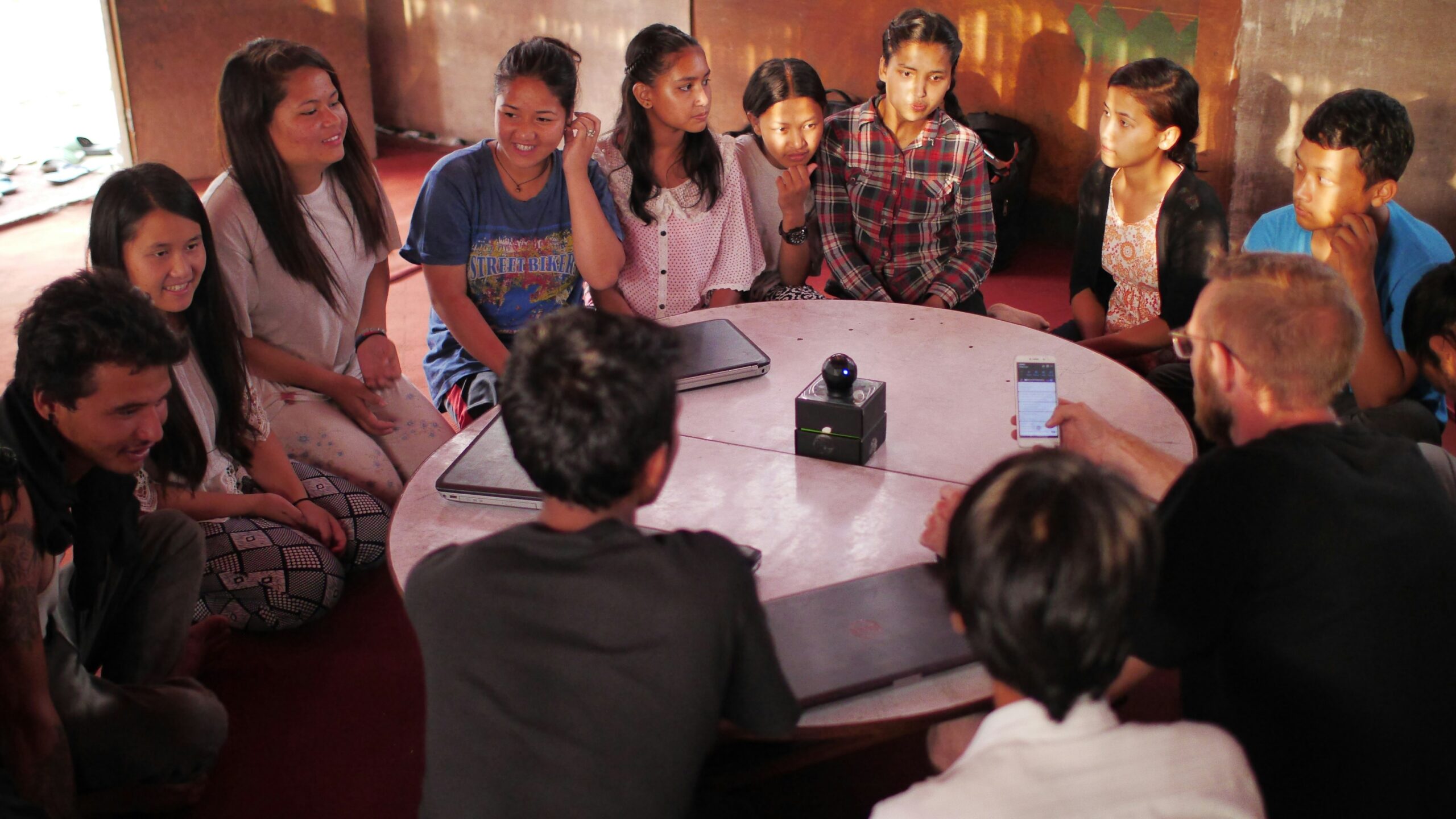In times of natural disasters, being prepared can make all the difference. By taking the time to anticipate and plan for potential emergencies, individuals and communities can minimize the devastating impact of these events. From having an emergency kit stocked with essential supplies to creating an evacuation plan, preparedness serves as a vital tool in safeguarding lives and properties during natural disasters. This article explores the various ways in which preparedness measures can provide invaluable support and assistance in the face of unexpected calamities.
Understanding What is Preparedness
Definition of preparedness
Preparedness refers to the actions and measures taken to ensure readiness and resilience in the face of natural disasters. It involves planning, organizing, and educating individuals, communities, and nations to effectively respond to and recover from the impact of such catastrophic events. Preparedness encompasses a wide range of strategies, including disaster management planning, public awareness and education, individual and household preparedness, community-level initiatives, regional and national response frameworks, the involvement of non-governmental organizations (NGOs), the use of technology, and promoting psychological resilience.
Role and importance of preparedness
The role of preparedness cannot be overstated when it comes to natural disasters. By being proactive and taking necessary precautions, communities and individuals can minimize the negative consequences that these events can bring. Preparedness saves lives, reduces injuries, and helps in the timely and effective response to disasters. It ensures that individuals have the necessary knowledge and resources to protect themselves and their communities. Moreover, it allows for a more efficient allocation of resources and aids in the swift recovery and reconstruction process.
Elements of preparedness
Preparedness consists of several key elements that form a comprehensive approach to dealing with natural disasters. These elements include disaster management planning, public awareness and education, individual and household preparedness, community-level initiatives, regional and national response frameworks, the involvement of non-governmental organizations (NGOs), the use of technology, and psychological preparedness. By addressing these elements, preparedness efforts can be well-rounded and effectively coordinated to minimize the impacts of natural disasters and enhance overall resilience.
Role of Planning in Preparedness
Importance of having a disaster management plan
A disaster management plan is a crucial component of preparedness as it provides a structured framework for responding to and managing natural disasters. This plan outlines the roles, responsibilities, and procedures to be followed by various stakeholders, including government agencies, emergency services, and community organizations. It ensures a coordinated and effective response, facilitates resource allocation, and helps minimize confusion and delays during critical times.
Relevance of stepwise planning
Stepwise planning is essential in disaster management to ensure a systematic and organized approach. By breaking down the planning process into manageable steps, it becomes easier to identify potential hazards, assess vulnerabilities, and develop appropriate strategies. This incremental approach allows for the identification of priority areas and the allocation of resources accordingly.
Benefits of continued revision and updating of the plan
Disaster management plans are not static documents but require regular revision and updating. By regularly reviewing and revising the plan, stakeholders can incorporate new knowledge, lessons learned from past experiences, and emerging technologies. This ensures that the plan remains relevant and effective in addressing the evolving challenges posed by natural disasters.
Role of simulation exercises in planning
Simulation exercises play a crucial role in disaster management planning. These exercises simulate potential disaster scenarios and allow stakeholders to test the effectiveness of the plan and identify any areas of improvement. By conducting these exercises, organizations and individuals can enhance their preparedness, identify gaps in response plans, and improve coordination and communication among different stakeholders.

Public Awareness and Education
Positive Impact of awareness in readiness
Public awareness plays a vital role in natural disaster preparedness. By raising awareness about the risks and impacts of disasters, individuals and communities become better equipped to respond effectively. Awareness initiatives inform the public about evacuation procedures, emergency contacts, and necessary preparations to minimize risks. Increased awareness also fosters a culture of preparedness, encouraging individuals to take proactive steps in safeguarding their lives and property.
Role of education in understanding natural disaster preparedness
Education is a key component in enhancing public understanding of natural disasters and their impacts. By integrating disaster preparedness into school curricula, individuals are equipped with essential knowledge, such as recognizing warning signs, understanding evacuation routes, and knowing how to respond during disaster scenarios. Education also promotes a sense of responsibility and empowers individuals to actively participate in disaster preparedness and response efforts.
Effect of miscommunication and misinformation on preparedness
Miscommunication and misinformation can significantly hinder preparedness efforts during natural disasters. Lack of accurate information about impending disaster events, evacuation routes, and safety guidelines can lead to confusion and panic among the affected population. It is crucial for authorities and media outlets to disseminate timely and accurate information to ensure the public makes informed decisions and takes appropriate actions to protect themselves and their communities.
Preparedness at Individual and Household Level
Steps individuals can take
At an individual level, there are several proactive steps that can be taken to enhance preparedness. These include creating a family emergency plan, securing vital documents, maintaining emergency supply kits, and understanding potential hazards in the local area. Individuals should also stay informed about weather updates and follow evacuation orders when necessary. Additionally, learning basic first aid and CPR can be valuable skills in providing immediate assistance during emergencies.
Role of the family in preparedness
The family unit plays a critical role in disaster preparedness. Families should work together to develop and practice emergency plans, discuss potential risks, and establish communication methods in case of separation during a disaster. Assigning responsibilities, such as checking on elderly family members or caring for pets, ensures that everyone is accounted for and cared for in times of crisis.
Importance of personal emergency kits
Personal emergency kits are essential in times of disaster. These kits should include basic supplies, such as food, water, medications, flashlights, batteries, and a first aid kit. Having these supplies readily available enables individuals to sustain themselves until help arrives or normal services are restored. Regularly checking and restocking these kits ensures their effectiveness during emergencies.
Benefits of early evacuation decisions
During certain disasters, early evacuation can be a life-saving decision. By closely monitoring weather updates and heeding evacuation orders, individuals can minimize their exposure to danger. Early evacuation reduces the risk of being stranded or trapped and allows emergency responders to focus on those who require urgent assistance. It is crucial for individuals to have a planned evacuation route and to follow instructions from local authorities.

Community Level Preparedness
Community disaster response teams
Community disaster response teams are groups of trained individuals who play a crucial role in disaster preparedness and response. These teams often include volunteers who are trained in first aid, search and rescue, and emergency communication. By mobilizing these teams, communities can effectively respond to disasters, provide immediate assistance to affected individuals, and enhance overall resilience.
Community emergency resources and shelters
Communities should establish emergency resources and shelters to provide assistance to those affected by disasters. These resources may include food and water distribution centers, medical aid stations, and temporary shelters. By pre-identifying these locations and stockpiling necessary supplies, communities can respond effectively and efficiently during emergencies, ensuring that affected individuals receive the care and support they need.
Role of local leaders and organizations
Local leaders and organizations play a vital role in coordinating community-level preparedness efforts. They facilitate coordination and communication among various stakeholders, including government agencies, non-profit organizations, and community groups. Through their leadership, these individuals and organizations ensure that resources are allocated correctly, awareness campaigns are conducted, and response plans are effectively implemented.
Preparedness at Regional and National Level
National disaster response framework and strategy
At the regional and national level, a comprehensive disaster response framework and strategy is essential for effective preparedness. This framework outlines the roles and responsibilities of various government agencies, establishes coordination mechanisms, and provides guidelines for resource allocation and response efforts. A robust and well-defined national disaster response framework ensures a coordinated and efficient response, minimizing the impact of natural disasters.
Role of government agencies and regional councils
Government agencies and regional councils are at the forefront of disaster preparedness and response at the regional and national level. These entities are responsible for developing and implementing policies, coordinating resources, and providing support to affected communities. They work closely with local authorities, NGOs, and other stakeholders to ensure effective response and recovery efforts.
Regional stockpiling of resources
Regional stockpiling of resources is crucial in disaster preparedness and response. By strategically placing stockpiles of essential supplies, such as food, water, medical equipment, and emergency shelter materials, regions can quickly respond to disasters without waiting for external assistance. These stockpiles ensure a more rapid and effective response, saving lives and reducing the impact on affected communities.

Role of Non-Governmental Organizations (NGOs) in Preparedness
NGOs in disaster management planning
Non-Governmental Organizations (NGOs) play a pivotal role in disaster management planning. They contribute expertise, resources, and knowledge to support preparedness efforts. NGOs collaborate with government agencies and other stakeholders to develop comprehensive disaster management plans, ensuring that the unique needs of affected communities are addressed. Their involvement facilitates effective coordination, resource mobilization, and community engagement.
Capacity building by NGOs
NGOs play a significant role in building the capacity of individuals and communities in disaster preparedness. They conduct training programs, workshops, and drills to equip individuals with the necessary skills and knowledge to respond effectively during emergencies. By empowering individuals at the grassroots level, NGOs enhance overall resilience and foster a culture of self-reliance.
NGOs in public awareness and education
NGOs are instrumental in raising public awareness and facilitating education on disaster preparedness. They design and implement awareness campaigns, conduct community workshops, and develop educational materials to disseminate information about potential hazards and appropriate response measures. NGOs play a critical role in reaching vulnerable populations and ensuring that preparedness information reaches all segments of society.
Benefits of Technology in Preparedness
Use of technology for early warning systems
Technology plays a pivotal role in early warning systems, providing timely and accurate information about impending disasters. Advanced weather monitoring systems, seismic sensors, and remote sensing technologies enable early detection and monitoring of potential hazards. This information can then be used to issue timely warnings to at-risk populations, allowing them to take necessary precautions and evacuate if required.
Role of social media and communication technologies
Social media and communication technologies have revolutionized disaster preparedness and response efforts. Platforms like Twitter, Facebook, and WhatsApp serve as important channels for disseminating critical information during emergencies. These platforms enable real-time communication, facilitate the sharing of updates and warnings, and allow individuals to seek and provide assistance during disaster events.
Role of Geographic Information Systems (GIS) in preparedness
Geographic Information Systems (GIS) play a crucial role in disaster preparedness by providing valuable spatial information for effective planning and response. GIS technologies can map vulnerable areas, assess risk levels, and model potential disaster scenarios. This information is vital for generating evacuation plans, allocating resources, and identifying critical infrastructure that may be at risk.
Psychological Preparedness
Mental health considerations during a disaster
Psychological preparedness is an essential aspect of overall preparedness. Disasters can have a significant impact on mental health, causing stress, anxiety, and trauma. It is crucial to recognize these mental health considerations and provide appropriate support to affected individuals. Mental health professionals should be involved in disaster response efforts to address the emotional well-being of those affected.
Counseling and emotional support strategies
Counseling and emotional support strategies are essential in mitigating the psychological impact of disasters. These strategies involve providing counseling services, setting up support hotlines, and establishing community support groups. By offering a safe and supportive environment for individuals to express their emotions and concerns, counseling and emotional support can aid in the recovery and healing process.
Tools for coping with anxiety relating to natural disasters
There are various tools and techniques that individuals can utilize to cope with anxiety relating to natural disasters. These include deep breathing exercises, meditation, practicing mindfulness, reaching out to support networks, and seeking professional help if needed. By developing coping mechanisms, individuals can better manage their anxiety and maintain their overall well-being during and after a disaster.
Relevance of Preparedness in Different Types of Disasters
Preparedness strategies for earthquakes
In earthquake-prone areas, preparedness strategies should involve securing furniture and heavy objects, conducting regular safety drills, and reinforcing buildings to withstand seismic activity. Individuals should be aware of safe zones and evacuation routes, as well as the appropriate actions during an earthquake, such as drop, cover, and hold on.
Preparedness strategies for flood
Preparedness for floods includes understanding flood risks in the area, creating an emergency communication plan, and preparing a flood kit with essential supplies. Individuals should be familiar with evacuation routes, practice water safety measures, and secure valuable possessions. Additionally, maintaining flood insurance coverage is crucial to mitigate financial losses.
Preparedness strategies for wildfires
Wildfire preparedness entails creating defensible space around properties, ensuring proper vegetation management, and having fire-resistant construction materials. Individuals should develop evacuation plans, maintain emergency supply kits, and monitor local fire advisories. By following the recommendations of authorities and wildfire management agencies, individuals can protect themselves and their properties.
Strategies for other disaster types
Preparedness for other disaster types, such as hurricanes, tornadoes, or tsunamis, involves understanding the specific risks associated with each event and taking appropriate measures. This may include reinforcing structures, creating emergency kits, securing loose objects, and staying informed about local warnings and evacuation orders. Understanding the unique characteristics of each disaster type and implementing relevant strategies is crucial in effectively mitigating their impact.
In conclusion, preparedness plays a vital role in mitigating the impact of natural disasters. By understanding the definition and elements of preparedness, recognizing the importance of planning, promoting public awareness and education, and implementing preparedness measures at individual, household, community, regional, national, and NGO levels, communities and individuals can enhance their ability to respond effectively and recover from disaster events. Incorporating technology, addressing psychological aspects, and tailoring strategies to different disaster types complete a comprehensive approach to preparedness, ultimately saving lives and minimizing the devastating effects of natural disasters.

